When volcanic eruptions occur andlava is released onto the earth’s surface, burgeoningconstruction industry and thebasalts of the Deccan Traps are ideal forthe purpose. This is why there are somany quarries around virtually everycity or large town in the state and, ofcourse, these quarries are a majorsource of specimen minerals. Surprisingly,however, some of the most importantmineral finds have been made during the digging of wells, rather thanquarrying. India has a very hot and dryclimate, and the demand for water for irrigationpurposes is enormous, and sohundreds of wells are dug in the state ofMaharashtra every year. These diggings are much larger and deeper than thewells that we think of in Western countries.

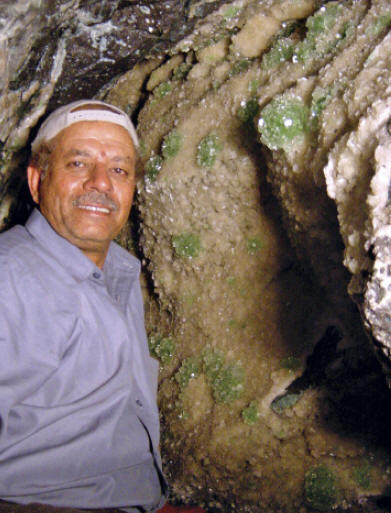
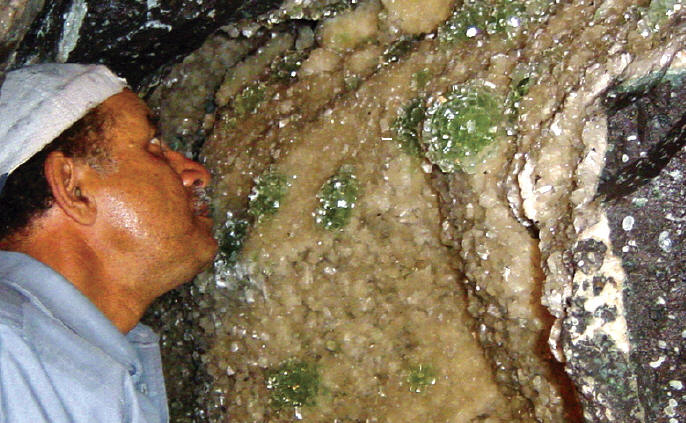

Sequence of unique photos showing numerous“disco ball” green apophyllites onstilbite, still in situ, on the wall of the firstpocket with Fasi Makki. S. Makki photos.
This is because the flow rate ofwater through the rock is very low sosmaller, shallower borings are simply insufficient.
Drilling and blasting of thebasalt is required to create a big enoughwell, and this commonly results in excavationsof between 10 and 20 m diameter,and up to 50 m in depth. In otherwords, these Indian “wells” are more likesmall quarries. Furthermore, the harshclimate which includes periods of extremeheat means that most wells lastfor only a few years before they run dry.
When that happens, new wells are dug inthe same area, which explains why welldiggingresults in so many mineral discoveries.
Sometimes, the pockets foundin these wells produce minerals of highquality although it is extremely rare thatthe specimens are good enough to excitethe international collecting community.
In such rare cases, the exact location ofthe discovery becomes much more importantand this can cause frustrationsfor collectors, given that most discoveriestend to be attributed simply to thename of the nearest town or, worse, thename of the town in which the local mineraldealer who handles the materialhappens to live.
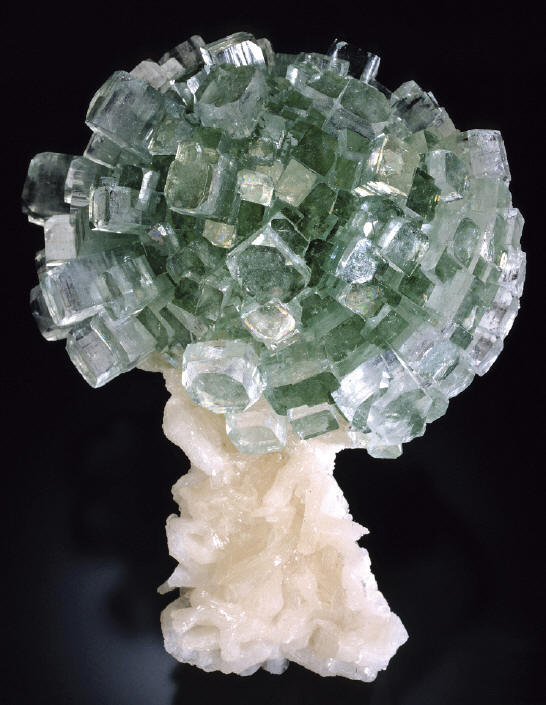
Arguably the most famous “disco ball” specimen from the 2001 find, 11 cm high . B. Larson collection. J. Scovil photo.
For obvious reasons, there is no controlor organization of specimen recoveryacross such a large area, and nosingle person could possibly keep tabson all of the diggings. There are manymineral dealers in Maharashtra, each ofthem seeking the best quality materialand, because of this, a system of “runners”has evolved. “Runners”, typically,are the small-time mineral gatherers,and miners who roam in hordes onmotor cycles looking for minerals in newand old wells and quarries, or perhapssmaller local dealers, who bring newfinds or information to the bigger dealers,for payment, of course. Each of thebig dealers has a group of “runners”working for him to supply specimens andinformation. Of course the bigger dealers,with the better reputations, attractthe most runners, all of whom are competingto obtain and sell the best specimens.
This competition can becomeextremely fierce. The well-diggers arepoorly paid and mineral specimens potentially offer an opportunity to makemoney well in excess of local wages.
Notsurprisingly then, fights are quite common,especially when a major find ofhigh quality specimens is made; specimens,perhaps, such as “disco balls”...
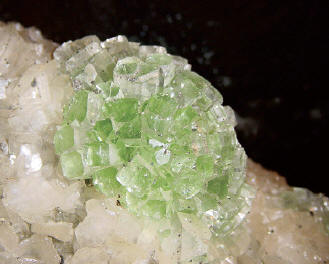
One of the apophyllite “disco balls” in situ in the the first pocket in 2001. S. Makki photo.
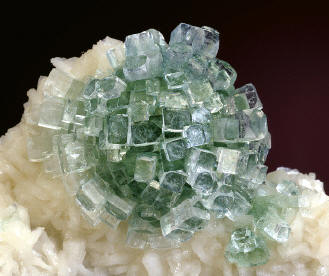
”Disco ball” apophyllite on stilbite fromthe first find in Momin Akhada, field ofview 8 cm. S. Smale specimen. J. Scovilphoto.
“DISCO BALLS” FROMMOMIN AKHADA
The village of Momin Akhada is locatedin the central part of Maharashtra state, about 5 km east from the town ofRahuri and 50 km from Ahmadnagar(one of bigger towns in the area).
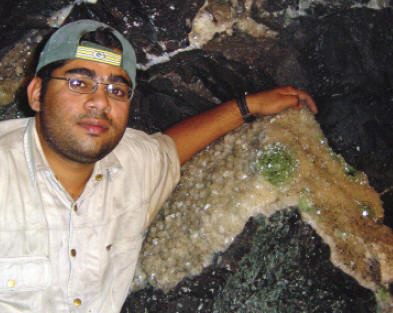
Sami Makki with “disco ball” apophyllite in situ in the pocket. F. Mmakki photo.
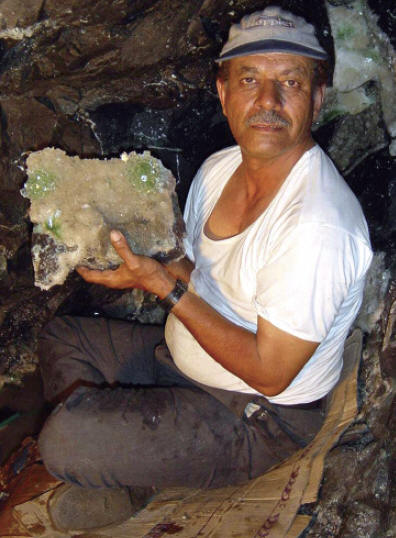
Fasi Makki with freshly collected specimen of stilbite with apophyllite “disco balls” inside the pcoket. S Makki photo.











 YueGongAnBei 44051102000467
YueGongAnBei 44051102000467


 |
|